Data Analytics & Precise Conservation Actions: The Freshwater Trust 2024 Update
January 12, 2024
First, I want to thank everyone who participated in our 2023 end-of-year giving program. Gifts are still rolling in as we close out 2023, and we’ve exceeded our goal. Those funds will support ongoing improvements and the further customization of our patented conservation analytics technology, allowing us to maintain our focus on the highest priority-lowest cost projects to improve our river systems fast.
These funds will also bolster our on-the-ground efforts alongside partners, focusing on priority restoration and conservation actions. This includes streamside revegetation to cool water temperatures for native fish, large wood installations providing shelter for fish and wildlife, fish passage repairs, side channel reconnections to sustain native fish habitats, sediment and nutrient runoff reductions for a healthy ecosystem, and floodplain enhancements that significantly improve downstream water quality.
What is The Freshwater Trust’s Mission?
At The Freshwater Trust (TFT), our mission is to preserve and restore freshwater ecosystems. Recognizing the limitations of traditional conservation methods, we lead the charge toward data-driven solutions that can scale. Our projects in Colorado, Oregon, Idaho, and California serve as learning laboratories. In these learning laboratories, we can test and refine our methods and analytical tools. Guided by our experiences and lessons learned, we prioritize conservation actions that yield measurable results for the present and future generations.
We have big aspirations, and I’m proud that every year, our teams in the field and our partners throughout the West push themselves toward a conservation revolution that is results-driven and outcomes-based. With your unwavering generosity in supporting our efforts and innovations, we’re getting closer to our goals, and we are grateful.
Now, allow me to share more about our latest innovations in conservation technology, the success of our current projects, and our ongoing efforts to change environmental policy.
Leveraging Data Analytics Tools for Better Water Conservation
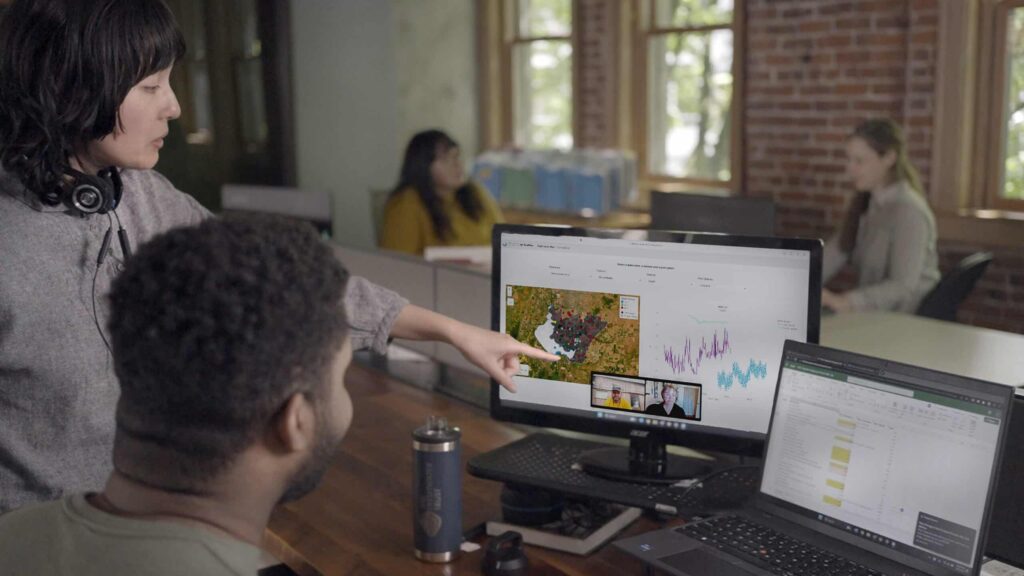
Innovation is our foremost approach to advancing conservation efforts on a large scale. We consistently enhance our data and analytics technology to help clients, partners, and government agencies identify priority watershed actions with optimal returns on investment.
Our work with landowners, farmers, ranchers, government agencies, and local communities in 2023 has allowed us to focus on specific conservation use cases essential for the environment and the economy. Such use cases have included:
- Leveraging analytics to strategically allocate funds for efficient irrigation upgrades, benefiting farmers financially while conserving limited resources.
- Utilizing real-time data to pinpoint crucial investment locations for modifying drainage networks and reducing sediment runoff. Doing so safeguards drinking water, mitigates erosion, and averts the need for expensive dredging operations.
In the past year, we’ve also focused on building a more robust and scalable infrastructure for our technology—enabling us to take on larger conservation projects that will benefit the environment and local communities with water quality and quantity improvements.
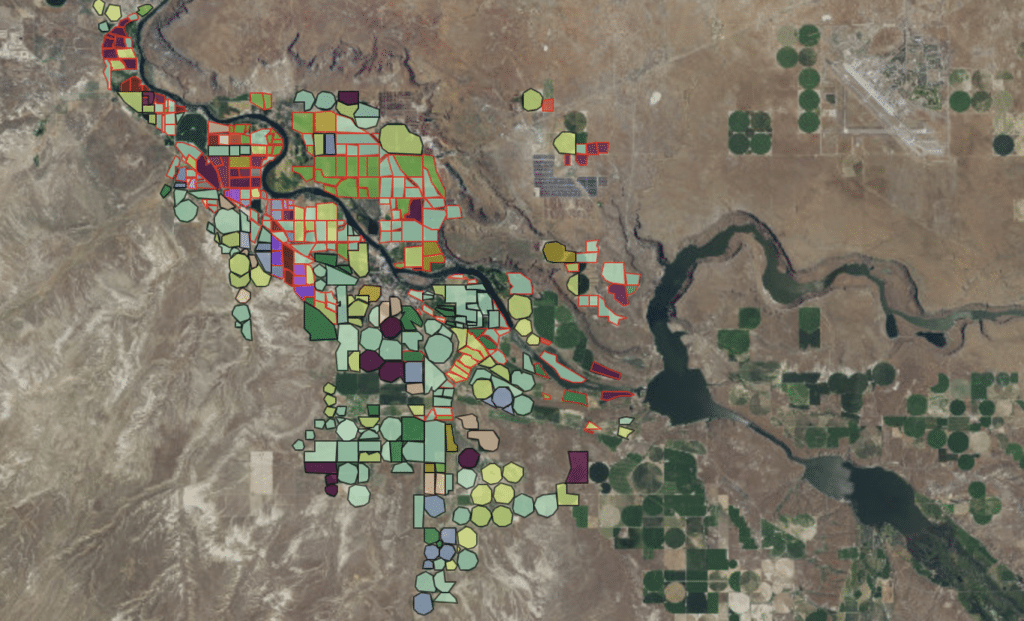
Through substantial investments of your donation dollars and grant funding into research and development, we can leverage our projects as test cases. Lessons learned from these endeavors inform future projects, enabling us to scale this approach for organizations across the United States and beyond. This iterative process ensures the ongoing development of more robust and cost-effective conservation solutions, delivering maximum impact.
How Donations Support Water Conservation
The generosity of your gifts and the grants secured in 2023 have empowered us to provide landowners, partners, and government agencies with essential data and analytical insights. Through our tools, we’ve steered these organizations, aiding them in implementing conservation actions that promise a more substantial impact at a reduced cost.
While we work with partners at many key locations with active conservation projects, some of our most significant locations include the following:
- Colorado River
- Deschutes River
- Sacramento and San Joaquin Rivers
- Snake River
- Rogue River
- Sandy River
In no basin are we there by accident—we carefully look for opportunities that can demonstrate applied innovations that can scale, and then we get to work. We had a lot of wins in 2023, which you can check out in more detail by reviewing this recent article. For now, let me just touch on a few highlights.
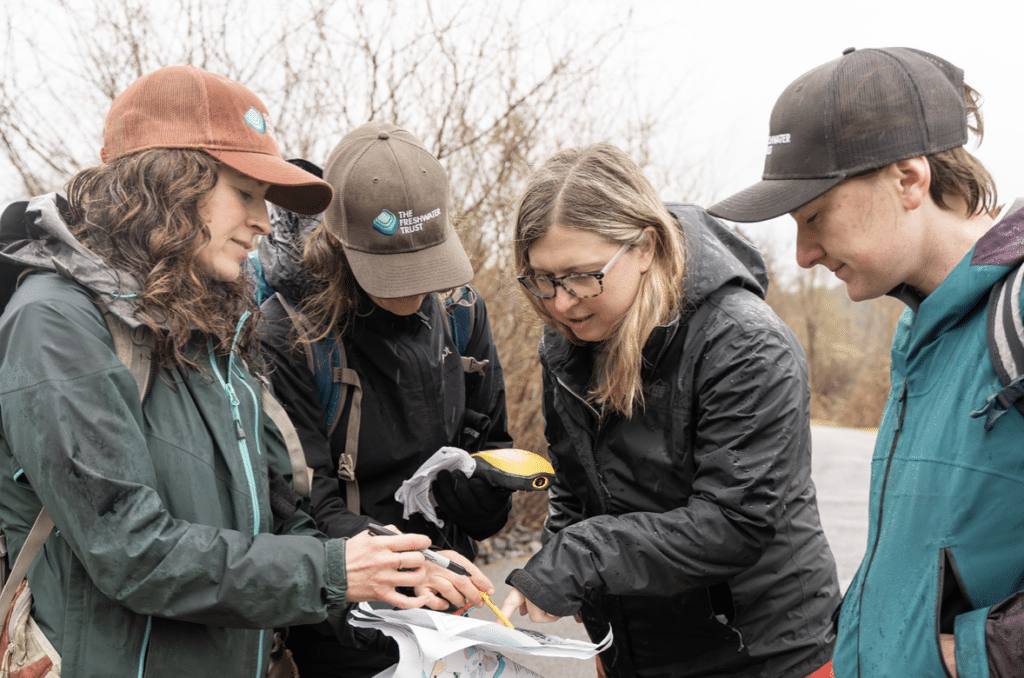
First, we implemented two water-quality trading sites along Bear Creek, representing some of the largest water-quality trading sites connected to Rogue River. Such efforts have contributed to the City of Ashland’s streamside (riparian) revegetation restoration projects, resulting in over 15 acres of planted vegetation. These projects play a crucial role in erosion reduction, while also enhancing shade to lower water temperatures, fostering a healthy habitat for fish.
Additional work in the Bear Creek watershed involved post-Almeda wildfire restoration work at four significant locations. On-the-ground teams tirelessly removed invasive species, known for burning hotter and exacerbating fire damage. Eliminating these plants not only benefits the environment but also aids the community in better controlling and minimizing future fire damage. In the spaces cleared of invasive plants, our teams replanted native riparian forests, demonstrating the potential to balance community safety with ecological needs.
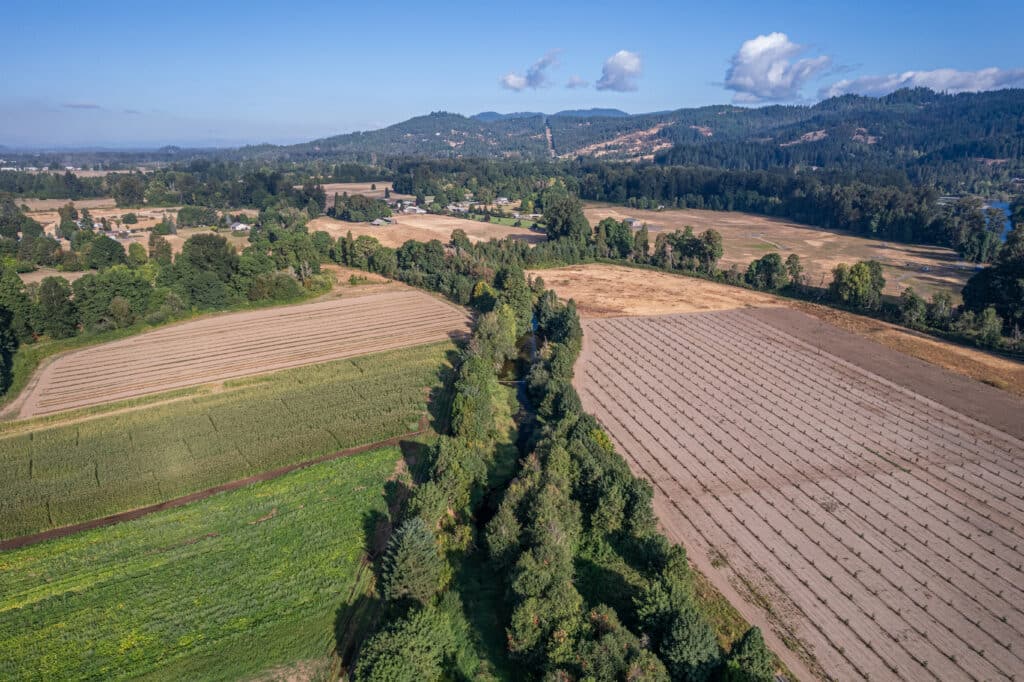
Next, in the Upper Willamette Basin, TFT and our partners implemented a new conservation site on the Row River. Working jointly with the Metropolitan Wastewater Management Commission (MWMC), we launched a water quality trading program in the basin, working with landowners to plant riparian forests. As plants grow at each site, they block solar load (heat from the sun), which allows MWMC to comply with water quality regulations under the federal Clean Water Act. Besides MWMC staying in compliance and protecting a vital resource, fish get the benefit of cooler water in the streams, improving their habitat. Landowners can also gain financial benefits from participating in these programs, so it’s a win-win all around.
Finally, TFT teams and our partners diligently removed landscaped mounds (berms) from five watersheds within the Sandy Basin, including the Zig Zag River, Still Creek, Lady Creek, the Salmon River, and Boulder Creek. The negative environmental impact of berms can include higher levels of riverbank erosion, the destruction of habitats, and stream instability. Removing them allows us to reconnect side channels that help improve instream habitats and river function.
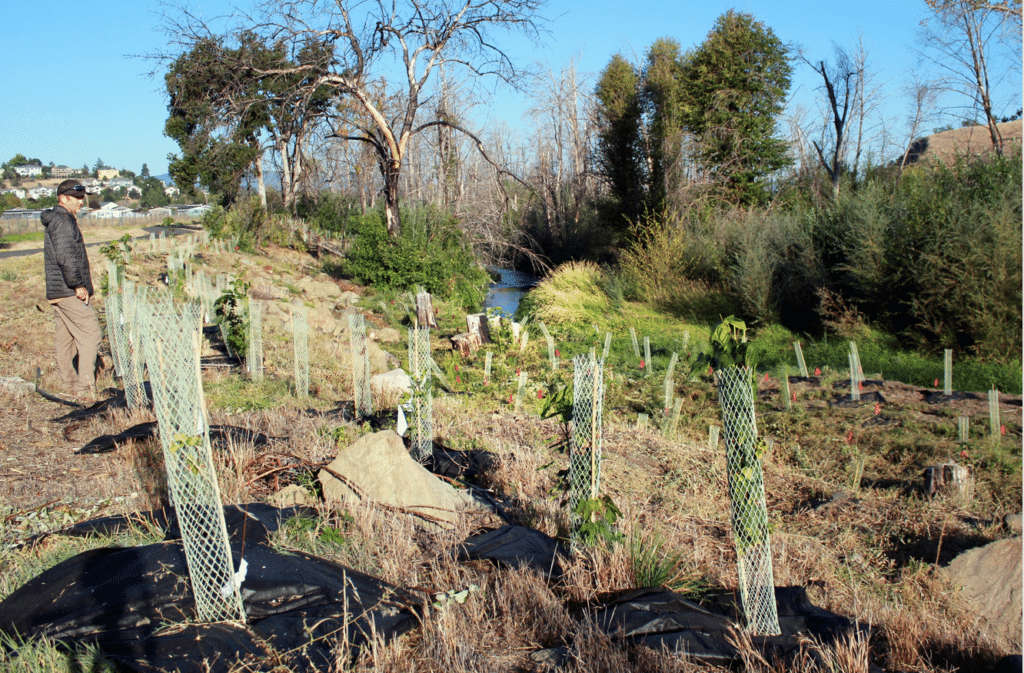
For exact numbers on the environmental benefits of these restoration projects (the uplift), as well as a complete list of all our partners and funders, please download the latest Uplift Report.
Influencing Environmental Policy to Change Water Conservation Funding Methods
We want to see significant policy changes ensuring government funding delivers measurable conservation results at the pace and scale we need to deal with today’s problems. Policy changes take time, but every year, TFT focuses on pushing harder and guiding policymakers toward the right methods, analytical tools, and outcomes needed to move the needle.
With the help of donors, partners, and grantors, TFT continues to successfully drive policy changes to accelerate on-the-ground restoration efforts by leveraging analytics and quantifying results. We have already ensured that $1 billion in quantified conservation efforts will be going on the ground in the coming years, but we’re far from done.
We will take the lessons we’ve learned and continue pushing for environmental policies that favor quantified conservation efforts with measurable results and outcomes. Our strategic intent is to put a billion dollars worth of effort on the ground, pursuant to our analytics, by the end of this decade. This would truly move the needle for conservation.
TFT’s 2024 Focus Points for Water Conservation Methods and Environmental Policy
Thanks to your gifts and the help of our grantors, TFT and our partners have done great work in 2023. But there is still more to do. We are getting ready for the exciting challenges 2024 will bring.
As we move into the new year, we will continue stewarding our conservation projects and guiding others to make outcomes-based conservation decisions. Key areas of focus this coming year include:
- Continuing to enhance our analytical tools and technology for more data-driven conservation actions.
- Further advancing the field of restoration and conservation by supporting prime programs and locations.
- Demonstrating a new integrated watershed investment approach as a possible solution for better conservation funding management.
- Promoting policies that support coordinated and performance-based conservation funding investments.
By design, we move fast, so to keep you looped in on our progress, we will be providing additional articles throughout the year that go into depth on these key focus areas for 2024. This is cutting-edge stuff, so please share these articles to spread the word and further amplify our message.
We cannot do what we do without your ongoing support, and again, we thank you.
Yours in conservation,
-Joe Whitworth
#Conservation #quantified conservation #river restoration #technology #water quality trading
